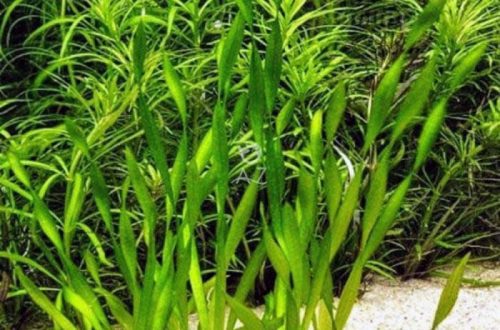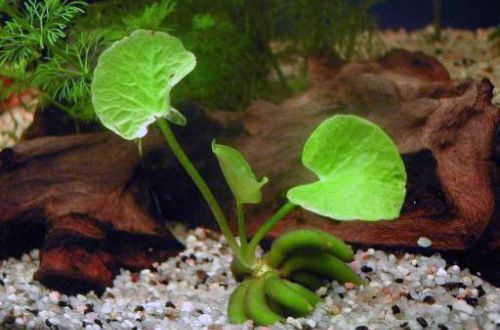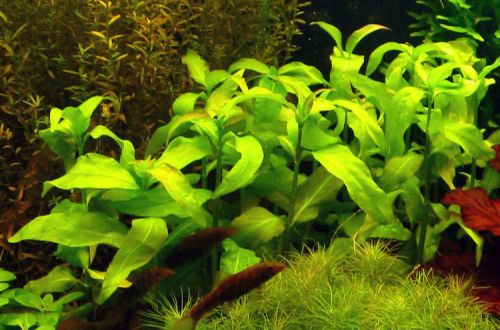
Anubias Afceli
Anubias Afzelius, scientific name Anubias afzelii, was first discovered and described in 1857 by the Swedish botanist Adam Afzelius (1750–1837). Widely distributed in West Africa (Senegal, Guinea,
Used as an aquarium plant for several decades. Despite such a long history, there is still confusion in the names, for example, this species is often referred to as Anubias congensis, or other, completely different Anubias, are called Aftseli.
It can grow both above water in paludariums and underwater. In the latter case, growth slows down significantly, but does not affect the health of the plant. It is considered the largest among Anubias, in nature they can form meter bushes. However, cultivated plants are noticeably smaller. Several short stems are placed on a long creeping rhizome, at the tip of which large green leaves up to 40 cm long grow. Their shape can be different: lanceolate, elliptical, ovoid.
This marsh plant is unpretentious and perfectly adapts to various water conditions and light levels. It does not need additional fertilizers or the introduction of carbon dioxide. Given its size, it is only suitable for large aquariums.





